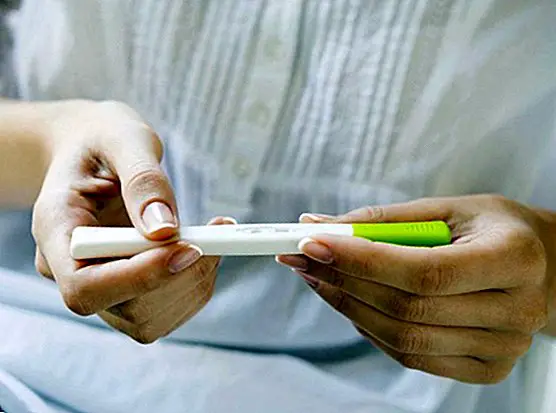Ovulation test: how it works and how it helps you get pregnant
The woman ovulates approximately every four weeks and is when the mature ovum is released from one of the ovaries and runs through the fallopian tube waiting to be fertilized by a sperm.
When the ovule is not fertilized by some sperm of the man himself it moves to the uterus where it degenerates and begins the menstrual bleeding known by menstruation.

Normal cycles take around 28 or 30 days to produce ovulation on the 14th or 15th day of the cycle.
There are cycles in which the ovules do not mature and it is not possible to get pregnant, these cycles are called anovulatory although it can get to menstruate in spite of not having ovulated.
For some years we can find in the market (especially in pharmacies, parapharmacies and even herbalists) different tools or utensils that pursue a goal: to help the mother know when to ovulate to increase the chances of conception from the moment you want to stay pregnant.
Surely at some point you have wondered what are the best days to try to conceive ?. It is at this point that we find the so-called ovulation test.
It is a useful tool for women who do not know when ovulation is going to occur, especially because they have doubts, either because they have an irregular cycle or because they have even had menstrual cycles without ovulation, which makes pregnancy difficult.
These tests are really simple to use: approximately on the days when you are supposed to ovulate, you must urinate on one of the rods that the test brings, which will identify if in your urine there is a hormone called luteinizing (LH), which increases when the follicle has matured properly and causes it to break, releasing the ovum in the fallopian tube.

It is true that for some years future mothers have another tool to increase their chances of conception: the so-called ovulation test or ovulation prediction kits.
As its name suggests, these tests are tools that allow to predict and know ovulation in the real days in which the woman ovulates, which undoubtedly helps to detect the most fertile moment of the month.
How does an ovulation test work?
Before explaining how they work we will know a little more about what happens in the woman's body before and during ovulation itself ...
At the beginning of the menstrual cycle, the woman's body begins to produce FSH (follicle-stimulating hormone), which facilitates the formation of a follicle in one of the ovaries, which contains and feeds the egg.

When a follicle has matured properly, there is an increase in the hormone LH (luteinizing), which causes the follicle to rupture, releasing the ovum in the fallopian tube. Ovulation has occurred at this time.
Explained this, the operation of the ovulation tests are really simple: given that during the middle of the cycle - that is, when ovulation occurs - the hormone LH increases briefly but spectacularly, the test detects high amounts of this hormone in the woman's urine. To do this, the test contains anti-LH antibodies, which can accurately predict the time of ovulation.
Is it really useful?
As we indicated, many women rely on certain methods to achieve pregnancy such as monitoring the basal temperature that we have already explained above.
But there is no doubt that one of the most frequent methods are the so-called ovulation tests that accurately predict the peak moment of ovulation.
When using them, these tests collect the hormone that is present during the ovulation called Luteinizing Hormone from the woman's urine.
This hormone is present during ovulation when the ovum has matured and has left the ovary to travel the fallopian tube waiting to be fertilized.

The ovulation test will pick up the increase in HL so it will be more likely to become pregnant during the 36 hours after detecting this increase.
The advantages offered by ovulation tests are:
- Efficiency and comfort, it is very effective when compared to other methods of ovulation and very comfortable to be able to do it in the privacy of your home.
- They are precise and very easy to use, will require ovulation the previous hours and its use is very comfortable and easy.


